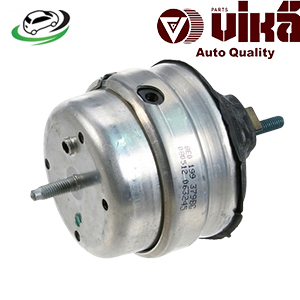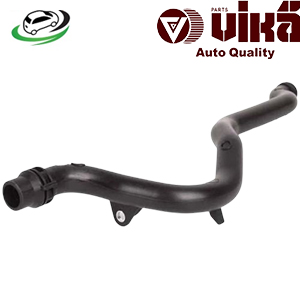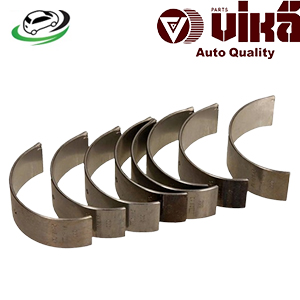-14%
Get AUDI 100 C3 Avant/ AUDI 80 B4 Avant / A3 (8L1) / A4 B5 (8D2) / A6 C4 (4A2) / TT (8N3) / VW Golf I (17)/ Caddy II MPV / Passat B5 (3B2) Connecting Rod Bearing Set 34105713
In automotive engines, the connecting rod bearing set plays a crucial role in ensuring smooth and efficient operation. The connecting rod, as the name suggests, connects the piston to the crankshaft, translating the linear motion of the piston into the rotational motion of the crankshaft. The connecting rod bearing set is a series of bearings located at the ends of the connecting rod, providing smooth contact surfaces between the moving components.
Connecting rod bearings reduce friction between the crankshaft and the connecting rod, allowing the crankshaft to spin freely within the engine. Without these bearings, the intense friction generated by the movement of these parts would cause rapid wear and tear, potentially leading to catastrophic engine failure. Proper maintenance, regular inspection, and timely replacement of the connecting rod bearing set are essential for ensuring the long-term health of an engine.
2. Understanding the Function of Connecting Rod Bearings
The primary function of the connecting rod bearing set is to allow the crankshaft and the connecting rod to move smoothly relative to each other. Here’s how they work in detail:
- Friction Reduction: When the engine is running, the crankshaft rotates at high speeds. The connecting rod bearings minimize friction between the crankshaft journals (the part of the crankshaft where the connecting rod attaches) and the ends of the connecting rod. These bearings allow for smooth movement while reducing wear on the metal surfaces.
- Load Distribution: The bearings also help distribute the force generated by the combustion process evenly across the crankshaft. During combustion, the piston is pushed down with considerable force, and this force is transmitted through the connecting rod to the crankshaft. The connecting rod bearing distributes this load across a larger surface area, preventing localized stress and damage to the crankshaft and connecting rod.
- Oil Lubrication: The connecting rod bearing set operates with a thin film of oil between the bearing surfaces and the crankshaft journals. This layer of oil, supplied by the engine’s oil system, prevents direct metal-to-metal contact and aids in heat dissipation. The oil also ensures that the bearing surfaces remain smooth and free from debris.
- Smooth Operation: By enabling smooth rotation of the crankshaft, connecting rod bearings ensure that the engine operates efficiently and without excessive noise or vibration. If the bearings wear out or fail, the engine will lose this smoothness, leading to potential knocking sounds or vibrations.
3. Types of Connecting Rod Bearings
There are two primary types of connecting rod bearings commonly found in engines:
- Plain Bearings (Sleeve Bearings): These are the most commonly used bearings in modern internal combustion engines. They are typically made from layers of metal alloys, such as copper-lead or aluminum alloys, and coated with a softer material like babbitt (a tin-based alloy). These bearings operate with a thin film of oil, providing a smooth surface for the crankshaft to rotate against.
- Roller Bearings: These bearings are composed of cylindrical or spherical rollers that reduce friction by rolling rather than sliding. Roller bearings are more commonly used in high-performance or specialized engines, such as those found in motorcycles or racing cars, where they can provide greater durability under extreme conditions.
4. The Importance of Properly Functioning Connecting Rod Bearings
The connecting rod bearing set is vital to the overall performance and longevity of an engine. Here are some key reasons why properly functioning bearings are so important:
- Reduced Friction and Wear: The primary function of the bearings is to reduce friction between the crankshaft and the connecting rod. By minimizing direct metal-to-metal contact, the bearings prevent premature wear of both the crankshaft journals and the connecting rods, extending the engine’s life.
- Heat Dissipation: Bearings help dissipate the heat generated by the constant movement of the crankshaft. Without proper heat management, excessive temperatures could cause the engine to overheat, leading to bearing failure and other mechanical problems.
- Smooth Engine Operation: Properly functioning bearings contribute to the smooth rotation of the crankshaft, ensuring the engine runs efficiently. Worn or damaged bearings can cause engine vibrations or knocking, which can impact performance and potentially lead to engine failure.
- Load Support: During the combustion process, the connecting rod bearings help absorb the forces exerted on the crankshaft, distributing these forces evenly. This prevents localized stress points that could lead to cracks or damage to the crankshaft or connecting rods.
- Fuel Efficiency: A well-maintained bearing set ensures minimal resistance between the moving parts of the engine. Lower friction translates to higher fuel efficiency, as the engine does not need to work as hard to overcome mechanical resistance.
5. Signs of Connecting Rod Bearing Failure
Like any mechanical component, connecting rod bearings wear out over time due to constant use and exposure to high temperatures and pressures. Recognizing the signs of failing bearings early can prevent more severe engine damage. Common symptoms of a failing connecting rod bearing set include:
- Engine Knocking: A knocking sound coming from the engine, especially at higher RPMs, is a classic sign of connecting rod bearing failure. This sound occurs when the clearance between the bearing and the crankshaft journal increases, allowing the crankshaft to move more freely than it should.
- Low Oil Pressure: Worn-out connecting rod bearings can lead to a drop in oil pressure. Bearings are designed with precise tolerances, and excessive clearance caused by bearing wear can reduce the pressure in the engine’s oil system. Low oil pressure can result in insufficient lubrication, further accelerating bearing wear.
- Metal Shavings in Oil: If the connecting rod bearings are failing, tiny metal particles may wear off and enter the engine oil. When changing the oil, inspecting for metal shavings can provide early evidence of bearing wear.
- Excessive Engine Vibration: Failing bearings may cause the engine to vibrate more than usual. These vibrations can be felt in the cabin or heard as unusual noises, particularly when the engine is under load.
- Engine Seizing: In extreme cases, a failed connecting rod bearing can cause the engine to seize. This happens when the bearing material wears away completely, leading to metal-on-metal contact between the crankshaft and the connecting rod, which can cause the engine to lock up.
6. Causes of Connecting Rod Bearing Failure
Several factors can contribute to the premature failure of connecting rod bearings:
- Lack of Lubrication: One of the most common causes of bearing failure is insufficient lubrication. If the engine oil is not changed regularly or the oil level is too low, the bearings will not receive enough lubrication, leading to increased friction and wear.
- Contaminated Oil: Dirt, debris, or metal shavings in the engine oil can damage the bearing surfaces, leading to accelerated wear. Using poor-quality oil or failing to change the oil filter can contribute to this issue.
- Excessive Heat: Engines that operate at higher-than-normal temperatures can cause the bearings to wear out more quickly. Excessive heat can degrade the bearing material and reduce its effectiveness in providing smooth motion.
- Improper Installation: If the bearings are not installed correctly during engine assembly or replacement, they may wear out prematurely. Incorrectly torqued bolts or misaligned bearings can lead to uneven load distribution, causing the bearings to fail.
7. Maintenance and Replacement of Connecting Rod Bearings
Regular maintenance is key to extending the life of the connecting rod bearing set. Here are some tips to ensure the bearings remain in good condition:
- Regular Oil Changes: Changing the engine oil at the recommended intervals is essential for keeping the bearings properly lubricated. Using high-quality oil and filters helps prevent contaminants from damaging the bearings.
- Monitor Oil Pressure: Keep an eye on the engine’s oil pressure gauge. If you notice a sudden drop in pressure, it could be a sign of bearing wear or another lubrication issue.
- Listen for Unusual Noises: Pay attention to any knocking or tapping noises coming from the engine. These sounds often indicate early bearing failure, and addressing the issue promptly can prevent further damage.
- Professional Inspections: If your vehicle is experiencing symptoms of bearing failure, have a qualified mechanic inspect the engine. If the bearings are worn or damaged, they should be replaced immediately to avoid more extensive engine damage.
8. Conclusion
The connecting rod bearing set is a vital component that ensures the smooth operation of an engine by reducing friction and distributing loads between the crankshaft and connecting rods. Proper lubrication, regular maintenance, and early detection of bearing wear are crucial to extending the lifespan of the engine. By recognizing the signs of bearing failure and addressing issues promptly, you can prevent costly repairs and ensure your vehicle runs efficiently for years to come
Follow us on Facebook for more parts.



